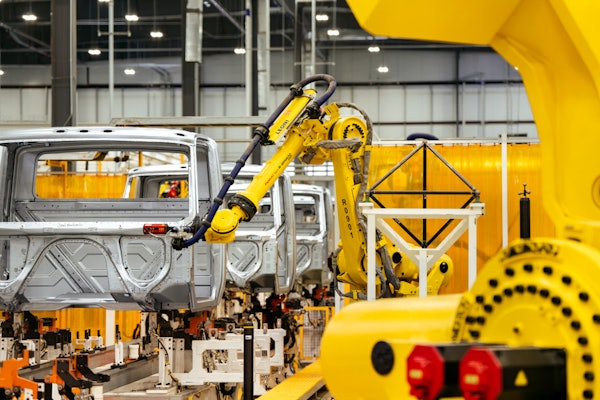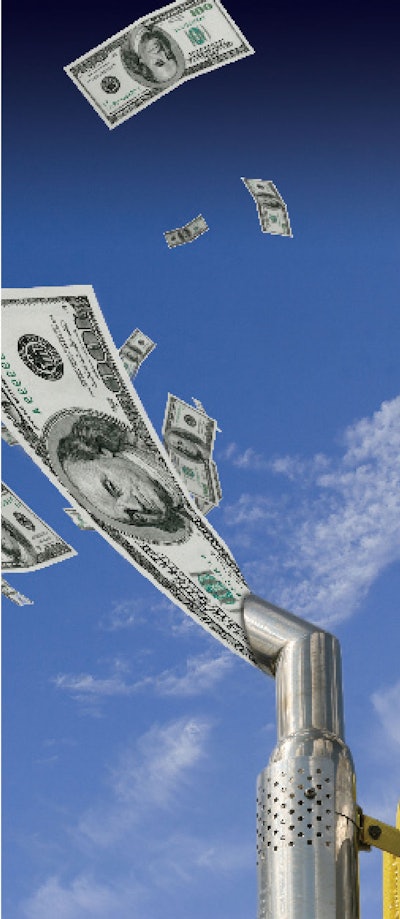
Trucks manufactured today break the age-old stereotype of black-smoke belching behemoths. Today’s heavy-duty diesel engines run more efficiently and cleaner than ever. In fact, a new truck operating in areas with heavy air pollution – nonattainment areas that do not meet national ambient air quality standards – actually can emit cleaner air through the exhaust than it takes in.
But these environmentally friendly advancements have not come about without cost. Environmental Protection Agency (EPA) emissions mandates have spurred the creation of new truck technologies, both in the diesel engines and downstream with emissions aftertreatment devices.
As a result, there have been steep increases in new truck prices during the past few years. These $10,000-plus price jumps were the foundation of the pre-buy event prior to the 2007 EPA regulations taking effect and to some degree have contributed to dismal new truck sales for the past several years.
While complying with the new, stricter emissions rules has created industry-wide challenges, they also have created opportunities, particularly for aftermarket parts and service providers.
“It has had an adverse impact on the OE market, but it also created revenue streams for the aftermarket,” says Sandeep Kar, global program manager of commercial vehicle research at Frost & Sullivan. “[EPA regulations] are opening up a lot of new revenue streams for aftermarket companies.”
The revenue streams will run deep. Current parts and service opportunities are in the hundreds of millions of dollars and will continue to grow. The potential market for cleaning diesel particulate filters (DPFs) alone is estimated by Donaldson Company, Inc. as currently about $87 million and will reach $313 million by 2015.
Since every Class 8 truck manufactured since 2007 is equipped with a DPF, and will most likely continue to be, it is not a temporary market. However, not everyone is taking advantage of, or even knows about, the potential business opportunities.
Kar estimates that 30 to 40 percent of the OES channel currently is equipped to handle DPF cleaning and the independent channel “lags far behind that.”
“They have to change their tactics and they have to change their game if they want to benefit from the [EPA] regulations, otherwise the dealers will keep on eating that larger share of the pie,” says Kar. “It’s not a very expensive piece of machinery [required to clean DPFs] and it does not require a lot of expertise.”
There are three main targets of EPA emissions regulations: nitrogen oxides (NOx), hydrocarbons (HC) and particulate matter (PM).
The first round of emissions regulations mandated for 2004 (but went into effect in 2002) focused on NOx and HC, and engine manufacturers were able to achieve compliance through cooled exhaust gas recirculation (EGR).
Stricter rules that went into effect beginning 2007 called for further reductions of those pollutants, as well as reductions of PM, which was achieved through the use of DPFs.
The new rules that went into effect at the beginning of this year further reduced the allowable amount of NOx and HC, and truck manufacturers introduced either selective catalytic reduction (SCR) or enhanced EGR, the latter of which was adopted only by Navistar. SCR requires an aftertreatment injection of diesel exhaust fluid (DEF), which is urea.
DPF OPPORTUNITIES
A DPF is basically a canister placed along the emissions stream that contains a reactive substrate to capture PM. The substrate is essentially a honeycombed filter that is catalyzed with precious metals such as platinum. As such, the DPF is a very expensive component. It is made to last the life of the truck and is not a wear item.
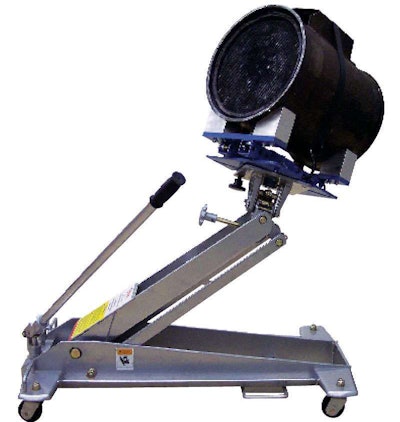
Unfortunately, that’s not always the case. It isn’t neglect so much as ignorance.
“The care of these devices is critical and it’s become a race against time to get fleets educated because there are a lot of fleets that are not aware of any of this and they put way too many miles on the DPF without servicing them,” says Drew Taylor, co-owner of FSX Inc. and its North American sales manager.
Additionally, if the performance of the DPF is impeded due to plugging or a structural breakdown, the vehicle is no longer emissions compliant and heavy fines can result.
While manufacturers have different recommended intervals for DPF cleaning based on miles or hours of operation, application and operating environment, the general consensus is that for most on-highway trucks the DPF should be cleaned once per year.
Fred Schmidt, general manager of Donaldson’s Retrofit Group, says shops charge between $300 and $500 for a typical DPF cleaning.
There are two types of cleaning. The most routine one involves shooting air through the DPF to clean out the accumulated ash. When a DPF is heavily soiled with soot, or unburned HC, it will require a thermal-baking process to loosen the caked-on debris. The air-cleaning process still is required with the thermal-baking process, either before or after, depending on the cleaning system manufacturer’s recommendation.
There are two types of air-cleaning systems available: pulse cleaning and bi-directional air-knife scanning. The primary manufacturers of the cleaning systems are Donaldson and SPX Service Solutions, which both use pulse cleaning, and FSX which uses air-knife scanning. All three companies also offer oven units for the thermal-cleaning process.
There are also different electrical and air requirements for different manufacturers’ DPF cleaning machines, so make sure your shop is equipped accordingly or if you will need to make upgrades.
Also, since DPFs come in different shapes and sizes, you may need to have several different adapters to accommodate your customer base.
GETTING IN ON IT
The threshold to become a DPF service provider is low. The capital expense for the cleaning apparatus and the baking machine starts off at about $20,000. Training a technician to remove, clean and re-install a DPF can be done in a few hours.
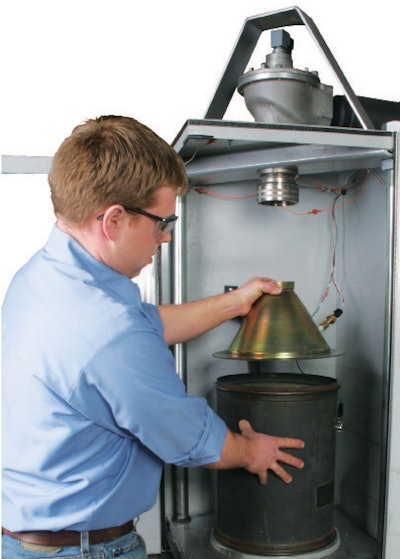 Diesel particulate filter (DPF) cleaning is largely an automated process once the component is properly mounted to the cleaning apparatus. A technician can be trained to perform the service in just a few hours.
Diesel particulate filter (DPF) cleaning is largely an automated process once the component is properly mounted to the cleaning apparatus. A technician can be trained to perform the service in just a few hours.“We believe that the total market for all aftertreatment components, including SCR, will remain heavily OEM focused,” says Eric Adamson, product manager of equipment and heavy-duty tools for SPX. “But we believe that DPF cleaning represents an outstanding opportunity for independent distributors.”
A company can recoup its capital investment in the cleaning machines within about one year if it is able to perform about 50 cleanings during that time, says Adamson.
You also can help your customers recoup more of their vehicles’ resale value by providing them with documentation of regular DPF maintenance. Since the component is so expensive, showing that it was cared for properly can significantly increase resale value.
Additionally, testing the DPF to show that it still performs to OE levels also adds to vehicle value, and can help a shop show customers that the cleaning process was effective. Taylor says they recommend using an opacity tester that reveals airflow through the DPF.
Another piece of equipment to consider is an ultrasound tester.
Schmidt recommends doing an ultrasound test on the DPF when it is brought in. This will reveal any pre-existing damage to limit your liability and will show any structural deficiencies that will affect DPF performance.
Removing the DPF and re-installing it should take a technician about an hour or less. You may want to consider a DPF handling tool because if a technician drops and damages one, it can be a very costly mistake.

“There’s three things that you need to be successful,” says Taylor. “The fleets demand that you have technology that will clean to OEM or to near OEM spec. That’s basically getting it to almost like new. You also need to have the ability to clean all shapes and sizes [of DPFs].
“Then you have to be able to inspect their filters so that they know it’s a sound filter,” he continues. “Third, you’ve got to be able to certify the quality of the cleaning and how clean you’re able to get the filter. It can’t be a guessing game anymore.”
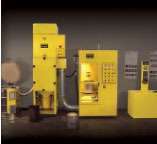 A service facility can get into the diesel particulate filter cleaning business with relatively low capital expense and can expect an ROI in about one year. Systems generally include an air-cleaning unit and a a thermal cleaning unit (above) or expanded to include those with an opacity tester and filtration/disposal unit (below).
A service facility can get into the diesel particulate filter cleaning business with relatively low capital expense and can expect an ROI in about one year. Systems generally include an air-cleaning unit and a a thermal cleaning unit (above) or expanded to include those with an opacity tester and filtration/disposal unit (below).Also, since the ash collected from DPF cleaning is considered a hazardous material, it must be disposed of properly. “It’s going to vary by state and locality, and it needs to be disposed of in accordance with local and state regulations,” says Adamson. “Our recommendation is any company that takes waste oil is who we recommend disposing of it with.”
PARTS OPPORTUNITIES
Due to their high cost and low replacement need, DPFs are not a stock item. However, other emissions-related products are, such as sensors, urea filters and diesel exhaust fluid.
Schmidt says while parts sales opportunities initially will be limited, longer-term opportunities include: “replacement DPF center bodies and electronic components, such as sensors and wire harnesses.”
According to Adamson, “Every time you clean the DPF, you also should replace the gasket and the V-band clamp.”
Kar estimates the urea filter replacement market will be about $25 million by 2015. They are a replacement item, he says, so “this is something you need to keep in stock because all Class 8 trucks [using SCR] will need urea filters replaced every 120,000 miles or so.”
A gallon of DEF or urea costs between $2.50 and $2.80 and most Class 8 trucks are equipped with a 33-gallon tank. Kar estimates the market for DEF will be $885 million by 2015, and can be sold in cans and drums at the distributor or shop level.
All told, between parts and service sales, emissions regulations have created a huge new market for both aftermarket channels. It just becomes a matter of positioning your company to take advantage of those opportunities and promoting your abilities effectively to customers.
These opportunities are still in their infancy. The companies that help educate their customers about the value of regular servicing of the emissions components and systems – and the very expensive risks of not doing so – will be able to best take advantage of these revenue streams.
“The opportunity is ripe for anybody who wants to work hard at this,” says Taylor. n
Staking your claim
Like every truck component and system, emissions-compliance technologies will require regular service and support. Because these technologies still are relatively new, aftermarket businesses have an opportunity to innovate this market and position themselves as true solutions providers.
There is confusion and a lack of education with end users on how often service is required and parts need to be replaced. Particularly when it comes to diesel particulate filter (DPF) cleaning, service providers have a chance to establish themselves as the premier maintenance shop in their area.
A campaign that includes educating customers, offering innovative service strategies and providing best-in-class DPF cleaning and maintenance can help your shop tap into this multi-million dollar opportunity.
Donaldson Company, Inc. offers a few suggestions for setting your company apart when it comes to DPF servicing:
• Package cleaning with other scheduled maintenance
• Package cleaning with retrofit projects
• Offer DPF service contracts to fleets
• Offer multiple cleaning service levels
• Provide counter drop-off service
• Offer remove and replace on vehicle
• Provide mobile cleaning at customer locations
• Manage a DPF exchange program
• Maintain inventory of parts for fleets


